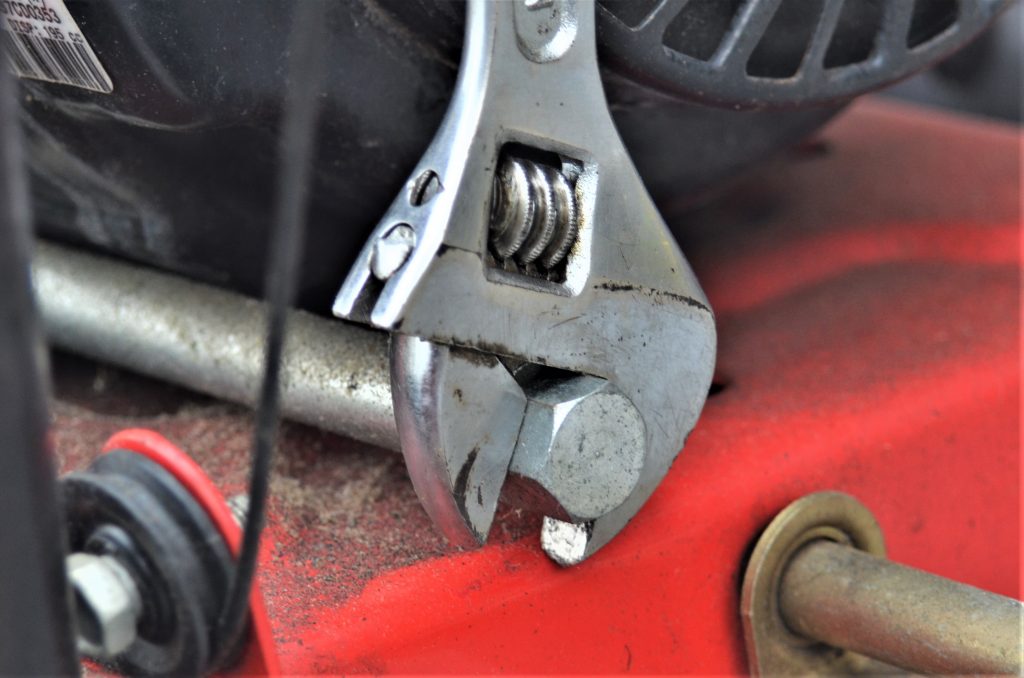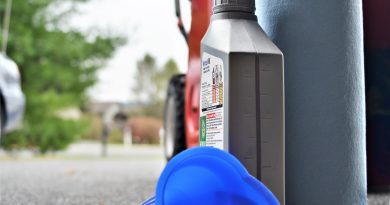Top Snow Blower Tune Up Tips

Don’t get caught in the cold! Make sure your Snow Blower works when you need it most with these Snow Blower tune up tips from DIY Outdoor. We’ll help you not get snowed in and make sure you’re ready for the the worst mother nature can throw at you.
- Clean your Snow Blower
- Check, and if necessary, replace the Spark Plug
- Make sure the air filter is clean
- Check your Fuel Filter
- Change your Oil
- Check Belts, Pulleys, and Linkages
- Add a fuel stabilizer such as Seafoam to the fuel
- Lubricate and grease bearing and impeller shafts.
- Coat the Snow Blower Chute, Blades, Impeller, Auger and Auger Housing with a silicone lubricant
- Check the Tires
Disclosure: As an Amazon Associate we earn from qualifying purchases.
Clean your Snow Blower
Often Snow Blowers are stored in garages and accumulate dirt and other grime build up during the off season. Get rid of those cobwebs by making sure the machine is clean and ready for winter. Even better is to use spray degreaser, and then a hose or pressure washer to make sure everything is clean as can be for the winter to come. Some folks even like to hit up the outside with a coat of spray wax like they would a car, but we’ll leave it to your judgement what you consider clean.
Check, and if necessary, replace the Spark Plug
Some experts recommend replacing the spark plug for a tune up every season, and while this is good for reliability, it’s probably not necessary. Make sure the spark plug doesn’t have any fouling or build up, as well as is gapped correctly using a spark plug gap tool or feeler gauges.
Make sure the air filter is clean
Check the air filter on your Snow Blower for any dirt or soot buildup. Some Snow Blowers use an oiled foam pad as an air filter, and these can be washed; check your owner’s manual for details. If not, replacements can be easily found at your local retailer or on Amazon.com,
Check your Fuel Filter
Not every Snow Blower has a fuel filter, (In fact, we recommend adding a fuel filter to your Snow Blower if you don’t already have one), but if it does make sure it’s not clogged with dirt or debris, and fuel is flowing. If your fuel filter is the metal kind, there’s no easy way to check, and you may have to just replace it.
Change your Oil
Maybe you meant to and forgot, or simply didn’t know you needed to change the oil in your Snow Blower. Engines need oil to perform at their best. In the wet slushy weather Snow Blowers operate in, it’s easy for water to get in the oil, and cause premature wear. Old oil also doesn’t lubricate as well as new. Changing your oil at minimum once a season is an easy way to get long life from your Snow Blowers engine. Some manufacturers recommend changing more often, so check your owner’s manual to be sure. If you’re not sure what kind of oil you need, check out our article on how to chose the best oil for your Snow Blower.
Check Belts, Pulleys, and Linkages
If you’re not comfortable taking apart your Snow Blower to examine it’s belts, talk to a qualified small engine professional to get their take on how the moving parts of your Snow Blower are holding up. Some larger Snow Blowers are driven by tank like tracks, and these should also be checked for any signs of cracking, wear, or deterioration
Add a fuel stabilizer such as Seafoam to the fuel
Modern gas isn’t what it used to be. The ethanol added to reduce pollution absorbs water from the air and can cause corrosion of metals over time. Stop this in its tracks by adding a quality fuel stabilizer such as Seafoam or StaBil to your gas. This will also help keep the carburetor or injectors on your equipment clean, ensuring you get the most performance for every dollar of fuel spent. We’ve talked a bit about oil and fuel additives before, so give that a read if you’re not sure.
Lubricate and grease bearing and impeller shafts.
You need to check your owner’s manual for this one. Some Snow Blowers don’t have lubrication points, but if they do, they’ll be listed here. You’ll want to use a grease and/or oil that’s suitable for low temperatures, making movement easy in the worst conditions. Spray lubricants such as Super Lube Multipurpose Aerosol are a great choice for getting into hard to reach areas. We likewise recommend Super Lube PTFE Multipurpose Grease; It’s not only clear and non-staining but has excellent low temperature performance.
Coat the Snow Blower Chute, Blades, Impeller, Auger and Auger Housing with a silicone lubricant
This is a secret of the pros for long life and reliability from their Snow Blowers. Coating the metal and plastic parts which touch the snow with a silicone lubricant will help them reject water, reducing rust buildup and helping them to move easier. Reducing friction means more power to throw snow, and less ice buildup on impellers and blades when munching through the wet stuff. One more important tip: You’ll want to do this at least 24 hours before snow is expected, to give time for the silicone to cure and adhere to the surfaces.
Nearly any silicone spray will work, but our experts prefer Liquid Wrench Silicone Spray Lubricant. It contains a special Cerflon additive that helps to reduce metal friction better than silicone alone. We’ve also found that coating with spray silicone seems to give smoother overall operation. Old timers sometimes use WD-40 instead of silicone spray, but we’ve found it just tends to make a mess.
Check the Tires
Nothing is more frustrating than barely being able to move your Snow Blower through deep drifts of snow, only to find the reason is a flat tire. Check the tires on your Snow Blower to make sure they’re properly inflated. Usually this is around 10-20 Psi, but your owner’s manual will have the exact value for your Snow Blower. Whatever you do, don’t over inflate. Much like car tires, properly inflated or slightly underinflated tires will give much better traction on slippery ice and snow.



Pingback: Fuel additives for your snow blower or small engine - Diy Outdoor
Pingback: Top 5 Snow Blowers for Small Jobs - Diy Outdoor